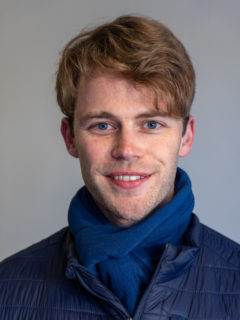van Huyssteen, Daniel, Ph.D.
Daniel van Huyssteen, Ph.D.
Research
-
Eine nahtlose VE-basierte Mehrskalen-Kopplungsmethode für Meso-Heterogene Materialien
(Third Party Funds Single)
Term: 15. March 2021 - 14. March 2024
Funding source: DFG-Einzelförderung / Sachbeihilfe (EIN-SBH)The overarching objective of our proposal is to develop a revolutionary seamless horizontally coupled multiscale method for meso-heterogeneous materials. For capturing the macroscopic mechanical behaviour of meso-heterogeneous materials by modelling and simulation, which is of utmost importance from an engineering perspective, computational challenges arise from the overwhelming geometric complexity and detail of the meso-structure. This urgently asks for multiscale coupling methods that enable to reduce the computational cost of simulations at the engineering scale, however without sacrificing accuracy when capturing the influence of the meso-structure on the macroscopic mechanical response. Our approach will not rely on scale-separation in order to be suited for problems involving singularities, e.g. at crack tips, and it will use a sole and uniform description of the underlying mesoscopic material behaviour in terms of its material properties and meso-structure in macro- and mesoscopically resolved sub-domains. To achieve this goal, we take inspiration from the quasi continuum (QC) method for crystalline materials that seamlessly bridges fully resolved atomistic domains with quasi continuum domains in which the majority of the atoms are enslaved to follow the motion of only a few representative atoms (Rep-Atoms). We thus propose to substitute the notion of atoms and Rep-Atoms as used in the QC method for the case of crystalline materials by the notion of nodes and Rep-Nodes for the case of meso-heterogeneous materials. Then, the underlying material meso-structure is fully represented everywhere within a macroscopic engineering structure. However, only a much smaller sub-set of the total amount of nodes and corresponding dofs is retained for the simulation of the engineering structure. We will distinguish between the underlying sub-discretization build on all nodes to capture the meso-structure and the overlaying Sup-Discretization build on only the much lesser number of Rep-Nodes used for the simulation of the macroscopic engineering structure. The assignment of sub-discretization nodes to Sup-Discretization Rep-Nodes and the definition of the corresponding Sup-Discretization follows adaptively. A versatile approach to mesh complex domains that allows for arbitrary polygons/polyhedra is the virtual element (VE) approach based on VE Ansatz functions. Noteworthy, VE Ansatz functions are not restricted to interpolate nodal dofs merely linearly along element edges/faces. This freedom in arbitrarily choosing the polynomial degree of the Ansatz functions makes VE conceptually also amenable to p-adaptivity. Of particular interest for our current proposal is moreover that the vertexes of the arbitrary polygons/polyhedra representing a VE and carrying the nodal dofs may also lay on straight lines/planar surfaces. Thus, VE elegantly and straightforwardly enables transition between sub-domains with strongly varying discretization densities.
Publications
2024
- , , , :
On adaptive mesh coarsening procedures for the virtual element method for two-dimensional elastic problems
In: Computer Methods in Applied Mechanics and Engineering 418 (2024), Article No.: 116507
ISSN: 0045-7825
DOI: 10.1016/j.cma.2023.116507
2022
- , , , :
On mesh refinement procedures for the virtual element method for two-dimensional elastic problems
In: Computer Methods in Applied Mechanics and Engineering 393 (2022), Article No.: 114849
ISSN: 0045-7825
DOI: 10.1016/j.cma.2022.114849
